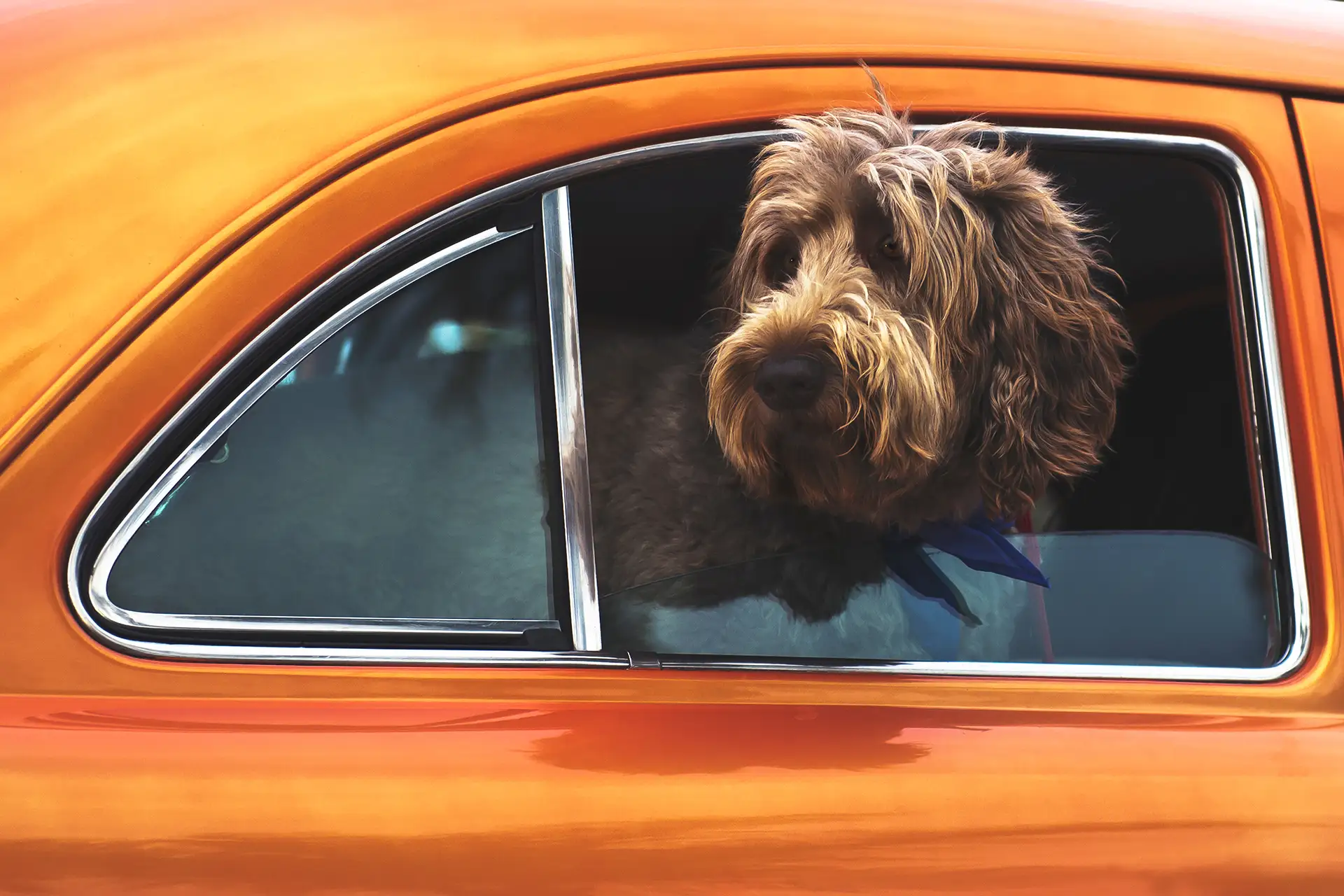Dog Training Tips
January is a pretty important month for our canine pals. Fido will be celebrating quite a few special occasions in the coming weeks. Several breeds will be bounding into the spotlight: January celebrates the Standard Poodle, the Alaskan Malamute, The Australian Shepherd Day, French Bulldog, American Eskimo Dog Day, Boxer Day, and Yorkshire Terrier. It’s also National Train Your Dog Month, Unchain a Dog Month, and Walk Your Dog Month. While these are all worthy topics, we’re going to focus on training in this blog. Making sure that your dog knows and obeys basic commands is crucial, not just to his safety but also to the safety of others. A local Burlington, ON vet offers some insight into petucation in this article.
What Are The Commands That Every Dog Should Know?
Did you know that dogs are capable of learning over 100 words? Fido is capable of learning some very complex commands, such as turning lights off and on, loading the dishwasher, or even fetching specific items. However, you don’t have to teach your pet anything super complicated or flashy. Just make sure that your pup at least knows the basics.
Here are the most important ones:
- Sit
- Stay
- Come
- Heel
- Lay Down
- Down
- Leave It
Time It Right
Dogs don’t have very long attention spans, except perhaps when it comes to begging for bacon, or watching their humans cook cheeseburgers or steaks on a grill. (Treats will definitely help your pooch stay engaged, but we’ll get to that later.) You don’t want to bore your furry best buddy with long, drawn out classes. Not only will your pet’s attention start to wander, but he may begin to actively dislike training. If you’re working with your dog at home, aim for about 15 minutes at a time. You can also go for several shorter sessions. That’s fine, too!
Is It Better To Train Dogs With Or Without Treats?
When it comes to training dogs, positive reinforcement is absolutely crucial. Your canine companion probably won’t be too impressed if you show him a report card with straight As, and if you offer him a gold star, well, he may just try to eat it. Treats, of course, are a much better option.
Treats shouldn’t be Fido’s only reward. Shower him with compliments and attention when he does something right. Our canine companions truly strive to please their humans, and they look adorably proud of themselves when they are soaking up praise and compliments.
What Are The Best Dog Training Treats?
At the end of the day, anything Fido likes will do the trick. However, there are a few caveats here. You’ll want to stick with small portions; otherwise, you may accidentally overfeed your adorable student. Training treats are an easy choice here, but you can also go the DIY route.
Here are a few options:
- Small slices of hot dogs
- Bits of shredded chicken, turkey, or deli meat
- Bits of kibble
- Here’s another hack: Microwave a hot dog with a little water in a bowl of Cheerios. The result? Hot-dog flavored Cheerios/low calorie treats
- With certain lessons, you may also find it worthwhile to use something that’s very high-quality. This would be something Fido probably doesn’t get too often, such as a piece of steak or burger. Ask your Burlington, ON vet for more information.
Always Be Consistent When Training Dogs
It’s very easy to forget that our canine friends don’t understand the nuances of human language. For instance, your pet may not understand that ‘Sit!’ means the exact same thing as ‘Fido, go sit down right now!’ Even small variations in wording can confuse your furry student. Take care to always use the same words or phrases every time.
This doesn’t only apply to wording, either. Consistency is crucial to all aspects of behavioral training and reinforcement. Don’t punish your pup for getting on the couch one day, and then reprimand him for it the next.
Why Is It Important To Avoid Negative Reinforcement?
While some professional trainers may be able to use things like prong collars and shock collars successfully, these can often do more harm than good, especially with novices. Stick with positive reinforcement.
There are a few reasons for this. For one thing, dogs are very emotional, and can quickly form bad associations with things. The last thing you want is for Fido to start to dread or fear his lessons. Also, your canine pal may not understand why he’s being punished. This may frighten or confuse him, and may even make him feel scared of you. That can backfire, and make training harder than it should be.
That doesn’t mean you can never reprimand your pet. If you catch Fido in the act of doing something wrong, you can chide him in a stern, disapproving tone. However, you also should never punish your dog for misbehaving, especially after the fact.
Our four-legged friends don’t understand the concept of punishment, at least, not in the way we do. Your pet may not understand what he did wrong, or why you’re mad at him. While we know that it can be frustrating to discover that your pooch just ate your new shoes or chewed up your sofa cushion, it’s important to focus on the long game.
When Should I Start Training My Dog?
It’s almost never too soon to start Fido’s petucation. With a very young puppy may not be able to grasp commands yet, they will benefit from being petted, held, and handled, and can quickly start learning the ins and outs of being a good boy. (Socialization is also crucial, but that’s another topic.)
In most cases, you can start training as soon as you bring your new puppy home. This is usually when Fido is about 8 or 9 weeks.
Housebreaking can also start while pooches are quite young. Teaching your canine pal obedience commands doesn’t have to wait until after your pet has been housetrained. In fact, training and housebreaking can work very well together.
What If I Can’t Train My Dog?
Dogs are just as unique as people, in their own way. Some pups will pick up the basic commands they need to know very quickly. Others? Not so much. Fido’s age, personality, and background all factor in here. Keep in mind that it’s also easy for people—especially those who haven’t trained dogs before—to make common mistakes.
If you’re having a hard time, consider reaching out to a professional. This is definitely something to look into if you have a fearful or reactive dog. It may take some time and money in the short run, but it will be well worth it in the long run.
When Is The Best Time For Training?
Don’t look to the clock for this one. It’s more important to go by Fido’s doggy schedule. Choose a time when your pet has already had his daily workout. It will be much easier to work with your dog if he’s already burned off his zoomies. You won’t have much luck if your pup is raring to go after that squirrel in the yard!
What Are Common Dog Training Mistakes?
We’ve already touched on some of the key concerns with negative reinforcement and inconsistency. Another common pitfall? Repeating commands over and over, and expecting a change in your dog’s reaction. If something isn’t working, go back to the drawing board: do some research, or enlist professional help.
You should never try to train your canine buddy if you’re in a bad mood. Fido will quickly realize that you aren’t feeling happy or cheerful. He could then associate that sour vibe with training … which could in turn make him uneasy about it.
Last but not least, you’ll need to continually reinforce the training. Even once Fido knows what ‘Lay down’ means, give him a treat for obeying here and there.
Conclusion: It’s important for dogs to be trained, both for safety and manners. Work on one command at a time, and be positive and consistent, and don’t be shy about seeking help with behavioral training if needed.Do you have questions about training your pet? Contact us, your local Burlington, ON animal hospital, anytime!



